WB: Why People of Bishnupur Want City to be Recognised as World Heritage Site
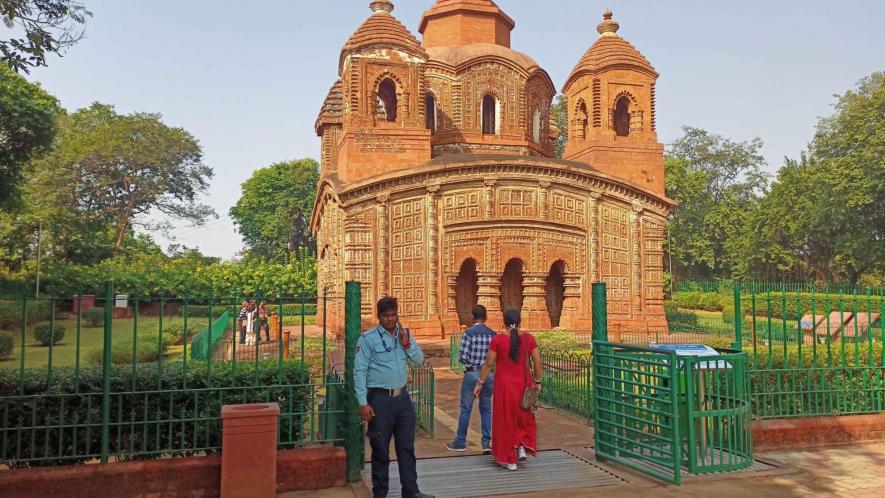
Shyamray temple
Despite literally meeting all the criteria, Bishnupur, located 200 kilometres to the west of Kolkata in the Bankura District of Bengal, the historic and culturally rich city that served as the Malla Raj Capital of Bengal, has not been recognised as a heritage site by the United Nations Educational, Scientific, and Cultural Organisation (UNESCO). Who is responsible for this?
Bishnupur's residents are raising this question strongly on the eve of the upcoming Bishnupur Mela (fair) that will be held from December 23-27.
Numerous people from this historical city say that Bishnupur Municipality, the Sub-division, the District administration, and, above all, the state government, as well as the archaeological department, are not consistently pursuing the recognition that Bishnupur deserves as a world heritage site. They strongly allege that Bishnupur Municipality has been damaging this historical city for years.
The land adjacent to the historical monuments has been occupied over the years with the direct support of Congress and later Trinamool Congress-run Bishnupur Municipality and houses have been built there. This trend is increasing, and it may be one of the very reasons why Bishnupur is not receiving the status it deserves.
Why Does Bishnupur Deserve This Recognition?
It is known from various historical studies and information from the Malla Raj family that Aadi Malla was the founder of the Malla dynasty in the 7th century (694-710). He ruled in Laugram for 33 years, presently under the Kotulpur Block of Bankura District. He is known as the Bagdi Raja (Scheduled Caste). His son, Jay Malla, invaded Padampur, captured the fort, and then extended his domains, shifting his capital to 'Mallabhum,' centred around the district of Bankura but also including parts of Burdwan, Medinipur, Murshidabad, stretching as far as Chotonagpur in Bihar.
There was a village named Bishnupur presently located in the Sankari Bazar area. The capital of Mallabhum came to be later known as Bishnupur. Several researchers mentioned in their research data that during the reign of the 49th Malla king, Bir Hambir, Vaishnava saint Srinivas Acharya came to Bishnupur to recover looted Vaishnava manuscripts. Under the influence of Srinivas Acharya, Bir Hambir accepted Vaishnavism, and at that time, the capital of Mallabhum was named after Lord Vishnu, Bishnupur. Vaishnavism became the predominant cult in these lands.
Researcher and resident of Bishnupur, Professor Nihar Hajra, said that since Bir Hambir's period (1565), the name of Bishnupur has spread across the country. Bir Hambir was a contemporary of Mughal emperor Akbar, marking the golden age of the Malla kingdom. Towards the end of the 16th century, the conflict between the Mughals, who occupied almost the entire country, and the Pathans, who independently ruled over parts of Bengal and Orissa, reached its peak.
In 1565, the Pathans, led by their prince Dawood Khan, attacked the kingdom of Mallabhum, leading to a fierce fight that lasted for several days. The Pathans suffered a massive defeat and retreated. A few years later, Bir Hambir saved Jagat Shing, the son of Mughal commander Man Singh, from Pathan attacker Kattun Khan. Malla King Bir Hambir's relationship with the Mughals was good and gradually improved. This trend was continuous.
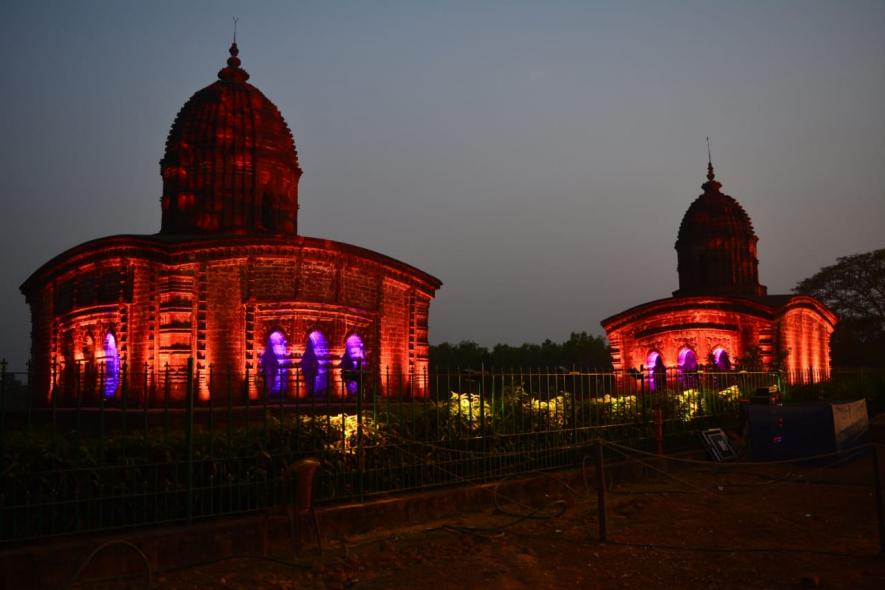
Malla king Bir Hambir started to build temples and architectural monuments in the terracotta style. He is the creator of Bishnupur architecture. He built Ras Mancha in 1622, whose view is similar to the pyramids of Egypt. Its exquisite craftsmanship and the echoes of the inner voice are still thrilling today. There is not a single monument like this in the whole country. Later, his son Prothom (First) Raghunath Shing built the temple of Shyam Ray. Several architectural monuments were built successively, including Panchchura, Madanmohan, Kalachand, and Srinivas Acharya temples.
These were built with bricks and laterite stones by local artists. These architectural pillars, walls, and interiors depict stories from Ramayana, Mahabharata, and Bhagavat Gita, as well as scenes of farmers, labourers, and musical pursuits. These structures still stand tall and tell a tale of a glorious heritage that we, the people of Bengal, should be exceedingly proud of, said Professor Nihar Hazra. Interestingly, no descendants of those who did this work have been found.
Malla kings built numerous reservoirs. The geographical position in Bishnupur is very much like the back of a turtle. All sides are sloped. The reservoirs are built at these sloped places, with a large area. Malla kings built seven reservoirs, including Lalbandh, Krishnabandh, Kalindibandh, PokaBandh, Shyambandh, Yumona Bandh, and Gantat Bandh.
Apart from these, there were 1,600 small and medium water bodies in Bishnupur. These reservoirs were made for agricultural and drinking water facilities and intended to combat external enemies. In addition, the Malla kings built a trench across the city to protect Bishnupur. Due to these reservoirs, this historic town has not had any shortage of drinking water to date. Ecological and biodiversity balance were maintained around these water bodies. Many cottage artisans from outside were brought to Bishnupur with respect by Malla kings; notable among them are Baluchori sari makers, weavers, conch and lantern artists, etc. Bishnupur Baluchori Sarees are the most popular all over the country.
Classical music of the Bishnupur Gharana (a special type) was created under the patronage of the Malla kings, and only the ancient Bishnupur Gharana classical music still exists in Bengal. Famous singers like Yodu Bhotto and Gopeswar Bandopadhyay are known as Bishnupur Gharana artists. Bengal's prominent archaeologist, the late Manik Lal Shigh, who is the founder of Acharya Yogesh Chandra Purakriti Bhaban, has mentioned in several writings that Malla kings of Bishnupur did not lead a life of luxury. They did not even build a palace; the royal families lived in small houses. Still, it exists in a dilapidated condition. They expanded art and culture and settled the respectable livelihood of the people of Bishnupur. The British even arrested Malla king Chaitanya Shing for refusing to pay taxes levied by the East India Company. Having ancient statues and manuscripts from the Pal and Gupta eras in the Acharya Yogesh Chandra Purakriti Bhaban in Bishnupur is incredible.
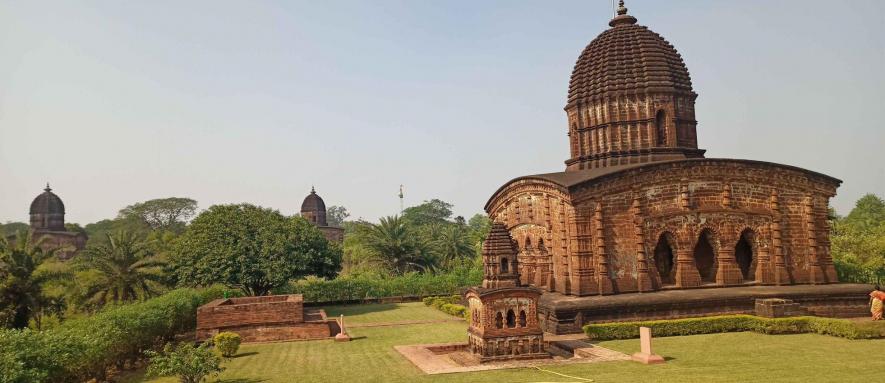
Kalachand Temple
Why is Bishnupur not receiving heritage status from UNESCO despite having so many historical monuments and a rich cultural environment? According to UNESCO, there should not be any infrastructure or occupation within 300 meters of historical monuments; the entire area must be kept free. However, the fact is that besides the historical monuments, there are no empty spaces anymore; concrete structures have occupied all of them or are being used for other purposes.
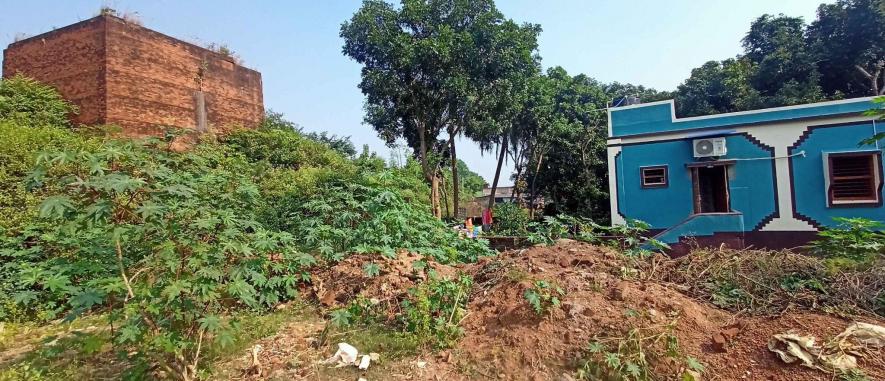
Houses built by occupying trenches
Several people in Bishnupur have said that for three decades, Bishnupur Municipality has been run by Congress, then Trinamool Congress, with Shyamaprasad Mukherjee as the chairman for over 30 years. During his time, the areas next to several temples and monuments were occupied. The municipality authorities were supportive, and trenches were dug up to build houses there. Water reservoirs are in the same condition, with some of these water bodies demolished and houses taking over. People allege that the municipality has allowed this at various times. Several people of Bishnupur said that to get heritage place status, these occupied areas must be free. Can the administration do that because this occupation has taken place with the help of the present state ruling party? Due to these various reasons, the number of tourists coming to Bishnupur is gradually decreasing.
"We are affected by this situation," said Nayan Tantubay, an artisan.
When Shyamaprasad Mukherjee was asked about the issues, he did not comment.
People also question the sanitation facilities of Bishnupur. Indranath Bhattacharya, the organiser of the Mallabhum Oitihyo Sangrokhon Porisod, said that if there is a little rain, drain water in most areas of the town overflows.
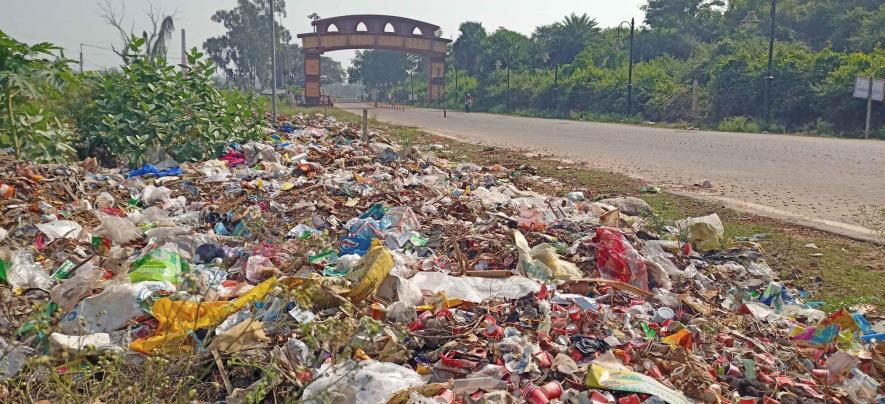
Garbage dump in the area
"There is no dumping ground in Bishnupur, and all the town's garbage is dumped in the forest of the neighbouring Chogan village. From there, the obnoxious stench reaches the town. No designated parking place exists, and the roads are not wide enough for two cars to pass together. The municipality and local administration are mute spectators regarding this matter."
The people of Bishnupur have raised questions about the role of the archaeological department. This department looks after 23 temples and historical monuments, but many remaining architectural structures are being destroyed day by day.
Rabindranath Patra, a teacher and drama artist, said they have no initiatives to free the encroachment of occupied places.
"We sought financial help from Members of Parliament Local Area Development Scheme (MPLADS) to Bishnupur BJP Member of Parliament (MP) Soumitra Khan to repair the almost dilapidated Srinivas Acharya Temple. Still, we did not get financial help from the MP of Bishnupur."
Conservation assistant of the Archaeological Survey of India (ASI) Bishnupur, Sandip Sinha, said that an application was made in 1992 to get world heritage status for Bishnupur, and it is in tentative condition. He mentioned that they have been informed several times about the encroachment of space in the architectural areas, but only the general and police administrations say what happened.
Sub-Divisional Officer (SDO) Bishnupur, Prosenjit Ghose, stated, "I am new and cannot say everything. An application must be sent to UNESCO through the Union government to get a Heritage Place status. However, we are making a brochure with video and still images of the historical architecture of Bishnupur.
The writer covers the Jangal Mahal region for ‘Ganashakti’ newspaper in West Bengal.
Get the latest reports & analysis with people's perspective on Protests, movements & deep analytical videos, discussions of the current affairs in your Telegram app. Subscribe to NewsClick's Telegram channel & get Real-Time updates on stories, as they get published on our website.
























